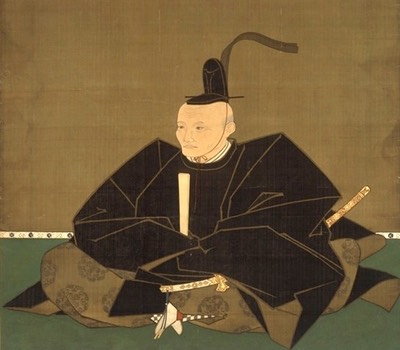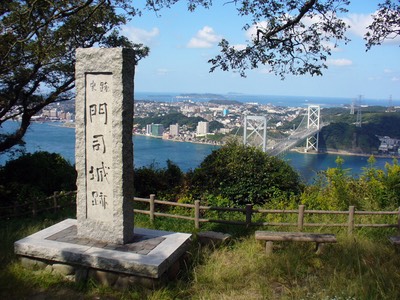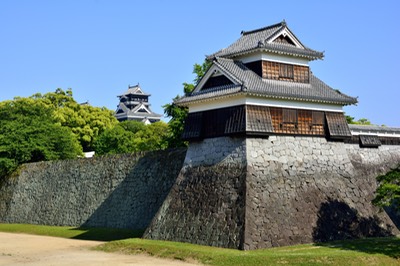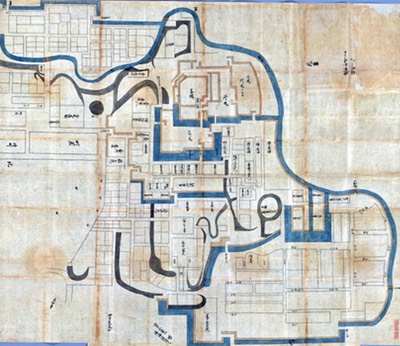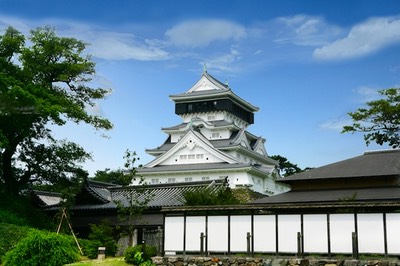The connections between Musashi and Hosokawa Tadatoshi went all the way back to the swordsman’s duel with Sasaki Kojirō on Ganryū Island. Tadatoshi, at that time, was still the master of Moji castle, a few miles northeast of Kokura. In the redistribution of fiefs in the wake of the Battle of Sekigahara, the Kuroda had been promoted to the fief of Fukuoka, and Tadatoshi's father, Tadaoki, had been promoted to their former fief of Nakatsu. Tadaoki, however, had not moved his headquarters to Nakatsu castle, but instead taken up residence in Kokura castle and bestowed Moji castle on his son.
It is quite likely that Tadatoshi was actively involved in the organization of the contest. Tadatoshi, who was in his late twenties at the time of the duel, is reputed to have been an avid practitioner of the martial arts. Moreover, given that, according to the Bukōden, Kojirō was one of the Hosokawa clan's fencing instructors, Tadatoshi naturally would have had a keen interest in its outcome. Indeed, he may well have practiced the art of fencing under Kojirō. If this is true, it seems all the more remarkable that Tadatoshi took such a neutral stance.
At the same time, the Bushū denraiki claims that Tadatoshi knew Musashi well. It also claims that the event was witnessed by Tadatoshi himself. The Bukōden, by contrast, only makes mention of what are referred to as Lord Tadaoki’s kenshi, or “inspectors.” No mention is made of Tadatoshi. It even mentions that some sources claim that Musashi was chased off the island by Hosokawa retainers who were riled by the outcome of the bout. Though these may have been Kojirō's deshi, it seems unlikely since, according to its author, Toyoda Masanaga, Tadaoki had strictly forbidden anyone to observe or participate in the duel.
Be this as it may, as quoted above, it was undoubtedly the Hosokawa's “elegant pursuits of heihō” that made Musashi decide in old age to take up Tadatoshi’s offer to come and stay in Kumamoto. Written by a retainer of one of Tadatoshi’s close vassals, the Bukōden describes the delicate negotiations that preceded Musashi’s move to Kumamoto, which was conducted through Tadatoshi’s head of pages, Sakaszaki Naizan, as well as Iwama Rokubei, the keeper of Kumamoto castle. The latter had been a former retainer of Ogasawara Tadazane, who had entered Tadatoshi’s service when he accompanied Tadazane’s second daughter to Kumamoto when she married Tadatoshi.
Like Musashi, Hosokawa Tadatoshi was by now also advanced in years, and he had come a long way since he had witnessed the duel between Musashi and Sasaki Kojirō on Ganryū Island. As the third son of Hosokawa Tadaoki he had been bound to remain lord of Moji castle, a minor figure in the larger feudal scheme of things. But when his eldest brother was disinherited, it was Tadatoshi, and not his second eldest brother (who had joined Toyotomi Hideyori at Osaka out of resentment), who was chosen to succeed his father in 1620 and become master of Kokura castle and the clan’s fiefdom in Buzen.
Unprepared though he was, Tadatoshi acquitted himself well—so well that in 1632 he was promoted to the Kumamoto fiefdom, a vast estate of more than five-hundred-thousand koku in the neighboring province of Higo. This meant that the Kokura fiefdom was free to be bestowed on someone else, and it so happened that the Bakufu chose Ogasawara Tadazane to be the new lord of the Kokura fiefdom. It had been Tadatoshi’s promotion to the Kumamoto fief, then, that enabled the promotion of Ogasawara Tadazane to the fief in Kokura, and thereby Musashi’s (and his son’s) final move to Kyushu.
Any queries of remarks? Launch or join a discussion at our new FORUM
